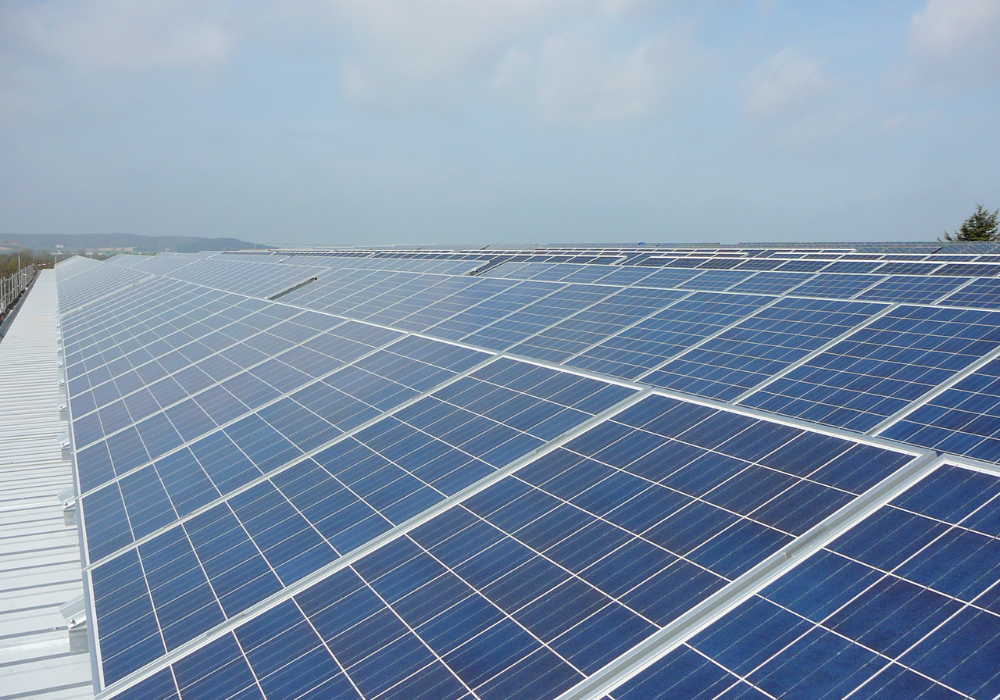
The coronavirus pandemic has caused major disruptions across the global solar photovoltaic (PV) supply chain, according to an analyst.
That is because the industry is heavily reliant on manufacturers in China, the original epicentre of the disease, where operations are yet to fully recover following the impact of the virus.
This could harm several countries’ bids to scale up on renewables and reduce emissions, as the rise of solar PV power generation is viewed as a “vital part” of the “global energy transformation”, according to the International Renewable Energy Agency.
Somik Das, senior power analyst at data and analytics firm GlobalData, said many solar PV developers in Asia and other parts of the world have “experienced prolonged delays in importing solar PV modules and other related supplies”.
“The global solar PV value chain is particularly affected because the manufacturing capacity of the countries is concentrated in a few major markets such as China, the US, Taiwan and Japan,” he added.
“Most of these nations have been impacted by the pandemic. In addition to this, many of the developers around the world are dependent on Chinese manufacturers to provide the PV modules.”
How coronavirus is affecting solar PV supply chains
Along with facing supply chain disruptions for components, solar PV developers are also experiencing labour shortages as quarantine measures are deployed to contain the virus.
Das claims the shortage of equipment and labour is not only confined to major markets such as China, the US, Japan and the UK, with upcoming solar markets such as Australia, France, Spain, Taiwan and Malaysia also impacted.
“Since the initial implementation of tariffs in 2012, the US has slowly diversified its panels procurement base from being overly reliant on China to Malaysia, South Korea and Vietnam among others,” added Das.
“But with the pandemic impacting those countries, the procurement supply chain of major markets like the US and several European countries, from these nations, is going to be negatively impacted — and will cause major delays to the projects in the pipeline.”

The effect of the virus on global renewables markets could make 2020 the first “down year” for solar power capacity addition since the 1980s, according to BloombergNEF.
The research arm of US media giant Bloomberg has revised down its February global solar PV demand outlook for the year from between 121 gigawatts (GW) and 152GW to between 108GW and 143GW – a drop of 8% drop in its midpoint estimate.
Coronavirus challenges threatening solar PV developers’ survival
It is clear the pandemic is providing the solar industry with many challenges, which Das believes are “strong enough to threaten the survival of various businesses and developers within the developed markets across the world”.
He said with the challenges in procuring equipment and labour shortages, companies with long-term projects are expected to face a “great deal of inconvenience”, which increases their “exposure to risks and liabilities”.
But the pandemic has taught the industry the negative aspects of being overly dependent on any one nation as a base for supplying components, according to Das.
“Moving forward, major players in the developed economies will surely understand the importance of housing the components manufacturing units within their own country,” he added.
“In the long run, that will significantly reduce the overdependence on other markets, and also reduce the negative impact of similar crisis situations, on the country’s solar sector.”
US solar power industry facing ‘significant crisis’, says expert
Abigail Ross Hopper, president of US solar trade group, the Solar Energy Industries Association (SEIA), said last month the industry in the US was facing a “significant crisis” with the virus affecting supply and demand.
She admitted that the industry knows anecdotally that the pandemic is “starting to impact delivery schedules”.
“It could affect demand for solar as well as our ability to meet project completion deadlines based partly on new labour shortages,” added Hopper.
“This once again is testing our industry’s resilience, but we believe, over the long run, we are well-positioned to outcompete incumbent generators in the solar+ decade and to continue growing our market share.”
Solar power accounted for 40% of all new electric generating capacity in the US last year, according to the SEIA.
That was the largest-ever share recorded and more than any other source of electricity, with 13.3GW installed – leading to a 23% growth in the US solar market from 2018.
Over the next five years, the SEIA predicts the total installed US solar PV capacity will more than double, with annual installations reaching 20.4GW in 2021.






